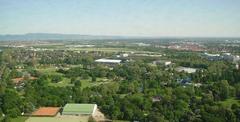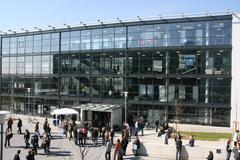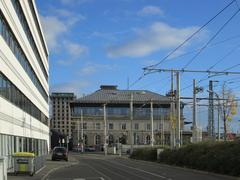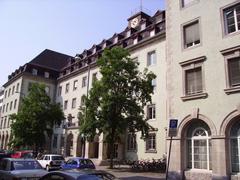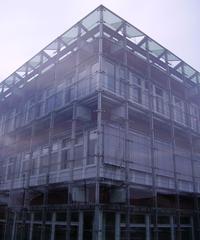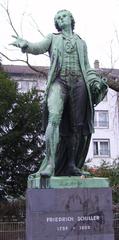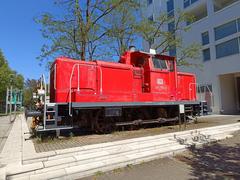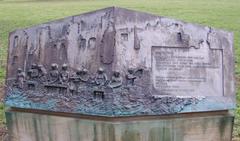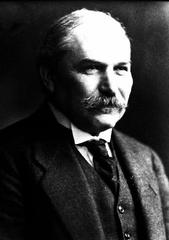
Mannheim Observatory: Visiting Hours, Tickets, and Guide to Mannheim Historical Sites
Date: 04/07/2025
Introduction to Mannheim Observatory
Located in the vibrant city of Mannheim, Germany, the Mannheim Observatory (Alte Sternwarte) stands as a testament to the Enlightenment’s commitment to scientific progress and innovation. Established between 1772 and 1774 under Elector Karl Theodor and the astronomer Christian Mayer, it quickly gained international prominence, rivaling other major European observatories of its time. With its elegant late 18th-century architecture, the observatory not only complements Mannheim’s other cultural landmarks—such as Mannheim Palace and the Jesuit Church—but also symbolizes the city’s ambition to fuse science and statecraft.
Throughout its operational years, the observatory made significant advances in celestial observation, binary star research, and European geodesy. Its reputation attracted illustrious visitors, including Wolfgang Amadeus Mozart and Benjamin Franklin, and underscored its role as a hub of intellectual exchange. Although astronomical research ceased at the original site in 1880 due to urban development and light pollution, the legacy of the Mannheim Observatory continues through successor institutions, historical preservation, and the display of its original instruments at the State Museum of Technology and Industry.
Today, visitors can explore the observatory’s exterior and its rich scientific heritage while enjoying proximity to other key attractions in Mannheim. This guide provides comprehensive information on visiting hours, ticketing, accessibility, practical tips, and nearby sites of interest (komoot, Wikiwand: Mannheim Observatory, Mozart & Material Culture).
Table of Contents
- Introduction to Mannheim Observatory
- Historical Foundation and Construction
- Scientific Contributions and International Reputation
- Contributions to European Geodesy and Surveying
- Transition, Relocation, and Legacy
- Visiting Hours, Tickets, and Visitor Information
- Accessibility and Amenities
- Travel Tips and Nearby Attractions
- Special Events and Photographic Opportunities
- Preservation and Modern Significance
- Frequently Asked Questions (FAQ)
- Conclusion
- References
Historical Foundation and Construction
The Mannheim Observatory was constructed between 1772 and 1774, reflecting Mannheim’s rise as a center of culture and science within the Electorate of the Palatinate. The observatory was commissioned after the Palatine court moved to Mannheim in 1720. Situated near the Mannheim Palace and the Jesuit Church, the observatory’s design and placement were intended to emphasize the city’s scientific aspirations. Its architecture, still well-preserved today, makes it a standout among Mannheim’s historical sites (komoot).
Scientific Contributions and International Reputation
From its inception, the Mannheim Observatory was intended for both astronomical and geodetic research, quickly establishing itself as a peer of the Greenwich Observatory. As the zero point for the Baden State Survey (Soldner coordinate system), it played a pivotal role in regional mapping and land surveying (komoot). Under Christian Mayer’s leadership, the observatory became internationally recognized for pioneering binary star research and for hosting esteemed guests such as Mozart and Franklin (Mozart & Material Culture; Wikiwand: Mannheim Observatory).
Contributions to European Geodesy and Surveying
Between 1867 and 1877, the observatory contributed to the Rhenish Triangular Network, a major geodetic project essential for precise European surveying. A survey pillar was added in 1870, and the observatory’s elevation of 129 meters above sea level became a key reference point for scientific and cartographic efforts (komoot).
Transition, Relocation, and Legacy
By 1880, increasing urban development and light pollution rendered the original site unsuitable for astronomical research. The observatory’s instruments and mission were relocated first to Karlsruhe and then, in 1898, to the Heidelberg-Königstuhl State Observatory. Under Max Wolf, the Heidelberg Observatory became a center for astrophysical research, notably contributing to asteroid discoveries and the use of astrophotography (Wikiwand: Mannheim Observatory).
The original Mannheim Observatory building, restored and adapted as studio flats since 1958, is now a protected historical monument. Many of its instruments are preserved and displayed at the State Museum of Technology and Industry in Mannheim. The observatory’s historic book collection, including volumes dating back to 1476, is part of the University Library’s Manuscript Department (Wikiwand: Mannheim Observatory).
Visiting Hours, Tickets, and Visitor Information
- Observatory Tower (Exterior): The tower’s exterior can be viewed year-round, free of charge. The interior is private residential space and not open to the public.
- Original Instruments: Visit the State Museum of Technology and Industry in Mannheim to see original observatory instruments. The museum is open Tuesday to Sunday, 10:00 AM to 5:00 PM.
- Museum Tickets: Entry to the museum is approximately €8 for adults, with concessions available.
- Guided Tours: Local guided heritage walks sometimes include the observatory’s exterior and related sites; check with the Mannheim Tourist Information Center for current offerings.
Accessibility and Amenities
- Observatory Tower: The exterior is accessible on foot and can be photographed freely. There is no public access to the building’s interior.
- State Museum of Technology and Industry: Wheelchair accessible, with restrooms, café, gift shop, and free Wi-Fi.
- Location: Centrally located in Mannheim, near the Mannheim Palace and Jesuit Church. Easily reached by public transport, bike, or car.
Travel Tips and Nearby Attractions
- Combine Visits: The observatory is close to other major attractions, including Mannheim Palace, the Jesuit Church, Luisenpark, and Technoseum.
- Photography: The tower is a popular spot for architectural photography, especially in the early morning or late afternoon.
- Respect Privacy: As the building is a residential space, visitors are asked to respect residents’ privacy and not attempt to enter.
Special Events and Photographic Opportunities
While the observatory does not host regular public events, it is sometimes included in city festivals, open studio days, or heritage walks. The observation platform and arc measurement pillar are occasionally accessible during special tours, offering panoramic city views. Check local cultural event calendars for details.
Preservation and Modern Significance
The Mannheim Observatory remains a prominent symbol of the city’s scientific heritage. It is featured in educational programs, local heritage walks, and museum exhibitions. Its influence continues through the preservation of its architecture, instruments, and archival materials, as well as through the ongoing research at its successor institution, the Heidelberg-Königstuhl State Observatory (Wikiwand: Mannheim Observatory).
Frequently Asked Questions (FAQ)
Q: Can I tour the Mannheim Observatory interior?
A: No, the tower is now private residential space. Only the exterior can be viewed.
Q: Are tickets required to visit the observatory?
A: No tickets are needed to view the exterior. Museum admission fees apply for exhibits featuring the observatory’s instruments.
Q: Are guided tours available?
A: Occasionally, as part of local heritage walks or special events. Check with the Mannheim Tourist Information Center.
Q: Is the observatory wheelchair accessible?
A: The exterior is accessible. The State Museum of Technology and Industry, where many instruments are displayed, is fully accessible.
Q: Where can I see the observatory’s original instruments?
A: At the State Museum of Technology and Industry in Mannheim.
Conclusion
The Mannheim Observatory stands as a remarkable historical site that bridges the Enlightenment era’s scientific achievements with modern cultural life. While its tower is not open for interior tours, its preserved exterior, the legacy of pioneering astronomical research, and the display of its original instruments in local museums make it an essential destination for visitors to Mannheim. Plan your visit to enjoy the observatory’s historical ambiance and explore the city’s rich collection of scientific and cultural attractions.
For updated information on opening hours, tickets, and local events, refer to the Mannheim tourism website and consider using the Audiala app for interactive audio guides and city tours.












